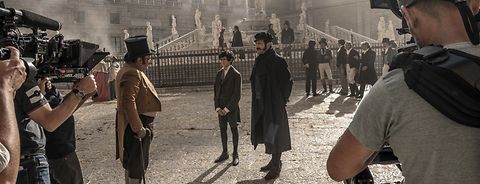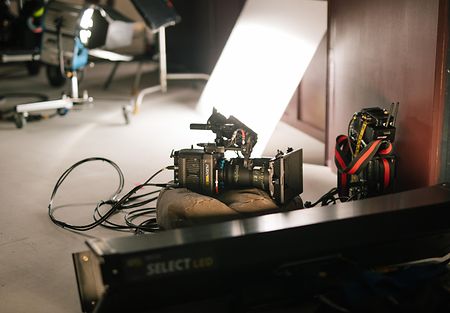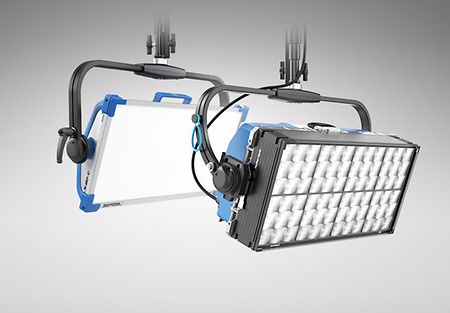From the words of Italian author Stefania Auci to the images signed by director Paolo Genovese and cinematographer Fabrizio Lucci: the Disney+ TV series “The Lions of Sicily” (“I Leoni di Sicilia”) translates the Florio family saga to the screen—a story about an entrepreneurial Sicilian family which gave birth to a commercial empire in the early 1800s. The cast for the eight-episode TV series includes Miriam Leone, Michele Riondino, Donatella Finocchiaro, Vinicio Marchioni, Paolo Briguglia, and Ester Pantano. The production was a narrative and visual journey with 22 weeks of filming in many Sicilian cities, including Trapani, Cefalù, Favignana, Marsala, and Palermo, but also stopping in Rome, where 19th-century Palermo was reconstructed in a backlot. Sitting down with ARRI, DP Fabrizio Lucci talks about his visual approach and the advantages of using ALEXA Mini LF and ARRI SkyPanel lights to capture “The Lions of Sicily.”
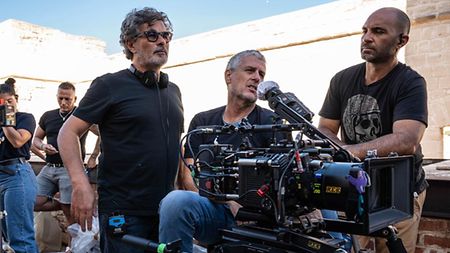
DP Fabrizio Lucci (center) and director Paolo Genovese (left) went on a narrative and visual journey during production
How did the collaboration with director Paolo Genovese on this project come about?
Paolo Genovese and I have been working together for a long time. From 2010 onwards we have collaborated on many films and TV series. Every time we work on a project, we try to carefully build it from scratch. His films are never the same, there is never “déja vu.” Paolo’s work ranges from “The Immature” to “Perfect Strangers,” “All Freud’s Fault” and “The Place.” He gets bored doing things that have already been done, so he looks for other avenues and involves us all in his research. Working with him, we know we will do something new, both technically and in terms of language. That can be lots of fun.
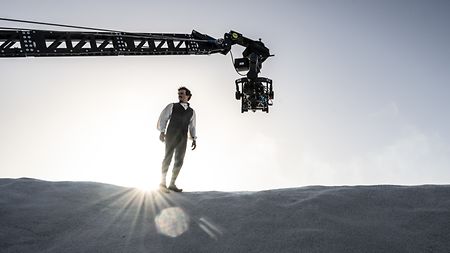
Protagonist Vincenzo Florio (Michele Riondino) and ALEXA Mini LF on set
What visual approach did you choose for “The Lions of Sicily”?
It is not easy to tell the story of an era that we did not live in and that is no longer there. In some ways, classic analogue film would have helped us, because with digital, we produce images that are too perfect, and we risk feeling the effect of today's gaze on the 1800s. For “The Lions of Sicily,” we first thought of wonderful series like “Peaky Blinders” and “Taboo,” as references. But when you confront an actor’s face, the language, the city in which you shoot, you completely forget about them. In Palermo, for example, there was crazy light, with the sun never very high, almost like there was sunset all day long.
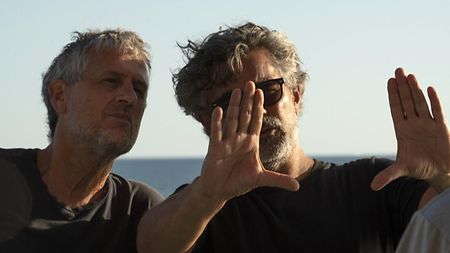
Cinematographer Fabrizio Lucci with director Paolo Genovese
How did the choice of camera come about?
Before we started “The Lions of Sicily,” we did location tests with multiple cameras and different lenses. I always prefer to do them on the locations where we actually shoot, because there the camera and lens can recognize colors and materials. In Sicily, we tried three high-quality cameras and three different sets of lenses to see how they reacted. Each had its own peculiarities, but we chose the combination that we felt was the best fit for this series: the ARRI ALEXA Mini LF with Zeiss lenses.
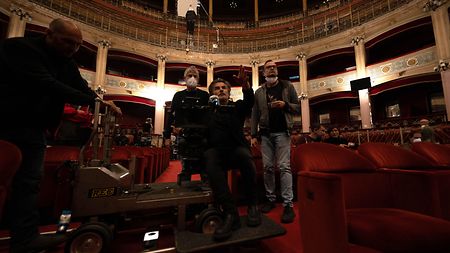
The series was shot with three ALEXA Mini LFs, with director Genovese being eager to operate one of the cameras
Which camera features led you to this choice?
The ALEXA Mini LF convinced us a lot on the highlights. We had to make an important choice in advance: whether to use artificial lights or not. The series is set in the early 1800s, when there was no electricity, so we would necessarily have to light the rooms with candles. We were shooting daytime interiors in locations where we couldn’t attach equipment to walls or window frames, as we usually do. We couldn’t even create a wooden perimeter on the ceilings because there were tapestries and frescoes that we weren’t allowed to touch. We had to use little light indoors, so by opening the aperture a lot, we risked not seeing the outside. But the ALEXA Mini LF gave us great legibility of the outside. This was the main reason for our camera choice, partly because we didn’t want to force color correction too much. We had set a goal of having 85 percent of the finished work already on the shoot. In period films, there is often a tendency to discolor, to remove etching, as if we were seeing the past with today’s eyes. Instead, we wanted to propose this era as seen through the eyes of the people of the 1800s, who did not see dilapidated, antiqued images. Even with color correction, we tried to adapt the look to that era and enhance the costume and set colors, aiming to respect their true nature. The result is very much connected to the extraordinary work of colorist Christian Gazzi and DIT Sandro De Frino.
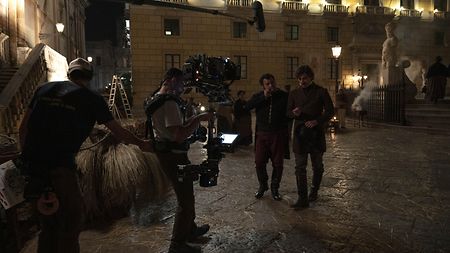
With the help of ALEXA Mini LF, the filmmakers were able to adapt the look of Sicily in the early 19th century
Did you do a lot of iconographic research during the preparation?
Yes, we did significant research on paintings and graphic representations. Before we started, the set and costume departments did a fantastic job of preparation, and it was very important to know what we were going to find. With their help, we developed an idea of what kind of light sources we would have, from candles to oil lamps. Based on those references, we then did tests to figure out how we could strengthen that kind of light. Before there were quartz lamps, incandescent lights, very hard, decisive projectors, but now you work with neon and you can create a color gradation mechanically, setting the fire effect or the candle effect.
How many cameras did you shoot with?
Three. It was a decision I made together with director Paolo Genovese. He had wanted to do it for a while, also because he wanted to play with one of the cameras and operate it by himself. He shot a lot with the third camera; he has a fresh eye. We extrapolated some of his artistry and integrated it into the series. His images had a lot of heart.
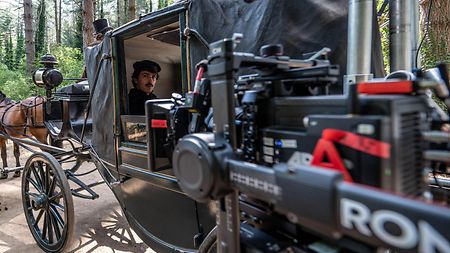
DP Lucci chose the ALEXA Mini LF particularly for how it works on the highlights
What lighting systems did you make use of?
We used a lot of ARRI SkyPanels , always somewhat filtered. We softened them a lot so the source wouldn’t be obvious. I really like watching a movie when I don't understand where the lights were put. When I saw “TÀR,” for example, I was completely amazed.
Are there any scenes that gave you particular satisfaction?
One sequence that came out very well is the brothel scene, which we shot in Viterbo. With three cameras, there were no off zones. We were shooting 360 degrees and ran into some difficulties. But then, partly thanks to the magic of the environment, partly thanks to the candles, the end result was incredibly satisfying.
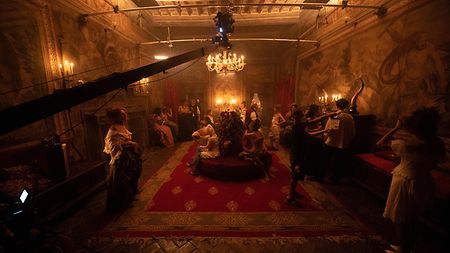
The brothel scene was shot with three ALEXA Mini LF cameras
Can you describe your workflow?
Before we started, we prepared LUTs with the colorist and then applied them with the DIT. We did a lot of work already on set, before we aligned it in post-production. We were looking for truth, the feeling of being there, in the Sicily of the 1800s.
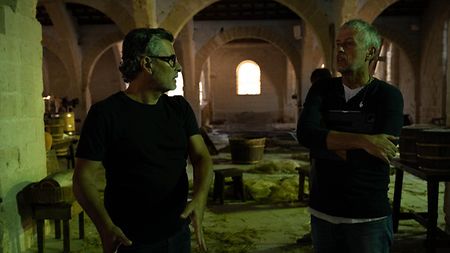
Director Paolo Genovese and DP Fabrizio Lucci shot “The Lions of Sicily” mainly using handheld camera
What format did you choose?
We shot with 2:39, a format that we like very much. The assistant operators always had to work very close, full aperture. We focused on what we were interested in seeing, an actor or an element, and shot a lot with telephoto lenses to get the focus of the scene precisely where we wanted it. Almost 80 percent of the series was shot using handheld camera, and for the rest we used everything at our disposal: Steadicam, dolly, boom, fixed camera, interweaving all the ways of shooting, because in the end, the story wins. Paolo is very straightforward with this: The camera is at the service of the story and not vice versa. For us, it is more important what is said rather than how it is said.
Technical equipment provided by R.E.C Rental Equipment Cine TV
